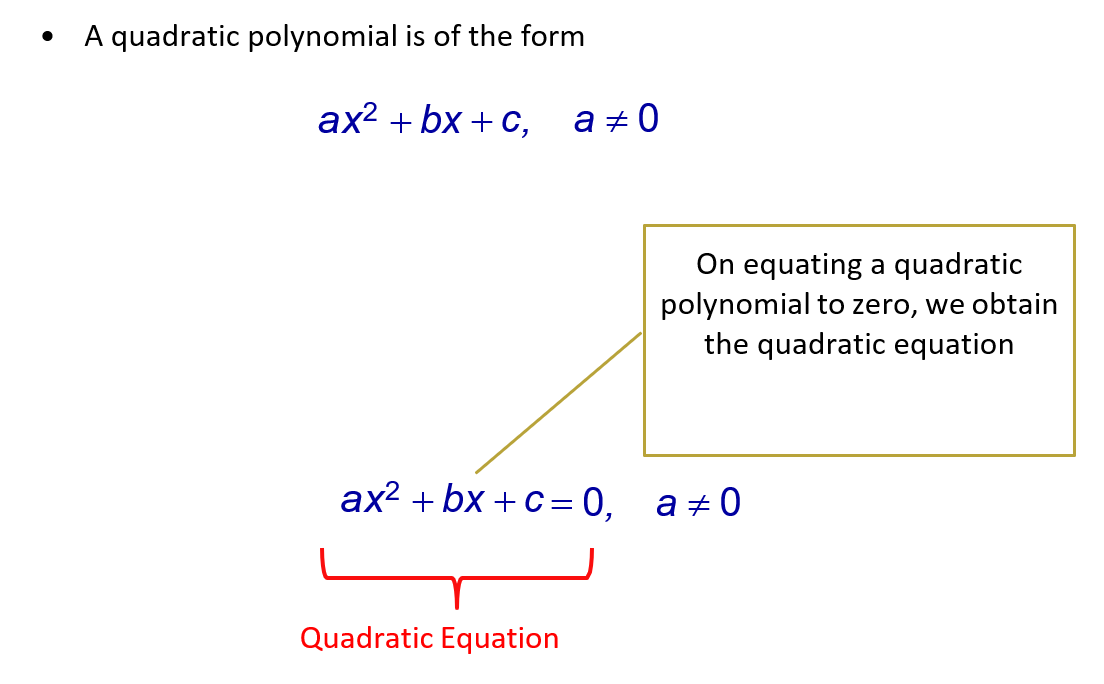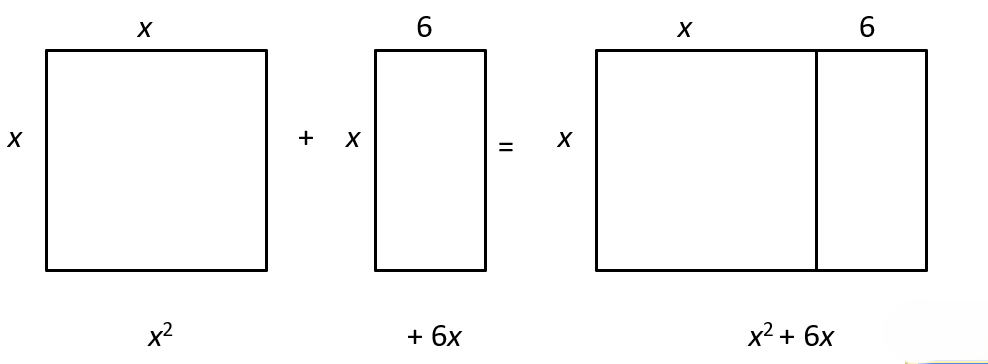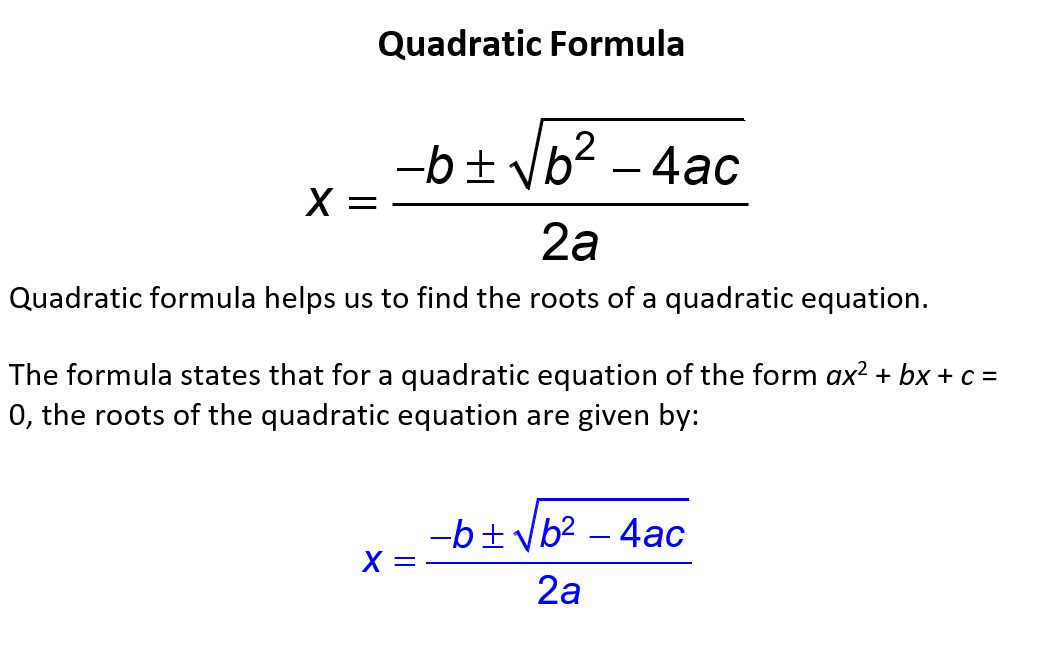Quadratic Equations – Complete Guide For Class 10 Math Chapter 4
Welcome to iPrep, your Learning Super App. Our learning resources for the chapter, Quadratic Equations in Mathematics for Class 10th are designed to ensure that you grasp this concept with clarity and perfection. Whether you’re studying for an upcoming exam or strengthening your concepts, our engaging animated videos, practice questions and notes offer you the best of integrated learning with interesting explanations and examples.
The chapter on Quadratic Equations introduces students to the core concepts and methods for solving quadratic equations, which are polynomial equations of degree two. Students learn about the standard form of a quadratic equation, ax²+ bx + c = 0, and explore various methods of solving these equations, including factorization, completing the square, and the quadratic formula. The chapter delves into the nature of roots through the discriminant and their relationships to the coefficients of the equation. By mastering these concepts, students develop a deeper understanding of algebraic structures, equipping them with essential problem-solving skills for advanced mathematical studies and real-world applications. This foundational knowledge enhances analytical abilities and prepares students for higher-level mathematics.
Introduction To Quadratic Equations
Quadratic equations appear in various real-life scenarios, including sports like basketball and volleyball, where players must understand the quadratic path of a ball.
Types of Polynomials
We are familiar with different types of polynomials such as :
- Linear Polynomial: ax + b, a ≠ 0
- Quadratic Polynomial: ax² + bx + c, a ≠ 0
- Cubic Polynomial: ax³ + bx² + cx + d, a ≠ 0
Quadratic Polynomials

Quadratic Equation
- Any equation of the form p(x) = 0, where p(x) is a polynomial of degree 2, is a quadratic equation.
- The terms of p(x) written in descending order of their degrees give the standard form of the equation.
ax² + bx + c, a ≠ 0 is called the standard form of a quadratic equation.
Formulation of Quadratic Equations
Quadratic equations arise in several situations in the world and in different
fields of mathematics.
Let us learn how to formulate the quadratic equations.
Consider the following situation: Karan’s mother is 26 years older than him. Three years from now the product of their ages will be 360. Formulate a quadratic equation to find their ages.
Let Karan’s present age be x years. Then, his mother’s age is (x + 26) years Karan’s age after 3 years = (x + 3) years.
After 3 years the age of Karan’s mother = (x + 26 + 3) years = (x + 29) years.
After 3 years from now, the product of Karan’s age and his mother’s age will be 360 years i.e., (x + 3)(x + 29) = 360 or x² + 32x – 273 = 0
Hence, this is the required quadratic equation.
Roots of a Quadratic Equation
Let g(x) = 0 be the quadratic equation, then the zeroes of the polynomial
g(x) are called as the roots of the equation g(x) = 0
Thus, x = α is a root of g (x) = 0 if and only if g (α) = 0.
Solution of a Quadratic Equation
Key Points:
- A quadratic polynomial can have at the most two zeroes. So, any quadratic equation can have at most two roots.
- Finding the roots of a quadratic equation is known as solving the quadratic equation.
Methods to Solve a Quadratic Equation
- Factorization
- Completing the Squares
- Quadratic Formula
Key Points:
- Solution of a Quadratic Equation by Factorisation Method
Steps to solve a quadratic equation by factorization method :
- Step 1: Factorise the product of the coefficient of x2 and the constant term of the given quadratic equation.
- Step 2: Express the coefficient of the middle term as the sum or difference of the factors obtained in Step 1. The product of these two factors will be equal to the product of the coefficient of x2 and the constant term.
- Step 3: Split the middle term into two parts obtained in Step 2.
- Step 4: Factorise the quadratic equation obtained in Step 3 by the grouping method.
Example:
Find the roots of the quadratic equation x² – 5x + 6 = 0
Let us first factorize x² – 5x + 6.
Find two numbers whose product is 6 and whose sum is -5.
The equation is x²– 5x + 6 = 0
The product of -2 and -3 is 6
= (x – 2)(x – 3)
The sum of -2 and -3 is -5
The roots of x²– 5x + 6 = 0 are the values of x for which (x – 2)(x – 3) = 0.
Therefore, x – 2 = 0 or x – 3 = 0 i.e., x = 2 or x = 3
Hence the roots of x² – 5x + 6 = 0 are 2 and 3.
- Solution of a Quadratic Equation Using Completion of Squares
We can solve a quadratic equation by completing the square.
We can convert any quadratic equation to the form (x + a)² – b² = 0
and then can easily find the roots.
Let us see with the help of a figure, how x² + 6x is being converted to (x + 3)² – 9

Steps to solve the quadratic equation by completing the square:
- Step 1: Obtain the quadratic equation. Let the quadratic equation be
ax² + bx + c = 0, a ≠ 0.
- Step 2: Make the coefficient of x2 unity by dividing throughout, if it is not unity.
- Step 3: Shift the constant term on RHS.
- Step 4: Add the square of half of the coefficient of x on both sides.
- Step 5: Write LHS as the perfect square of a binomial expression and simplify RHS.
- Step 6: Take the square root of both sides.
- Step 7: Obtain the values of x by shifting the constant term on RHS.
Example:
Solve the quadratic equation 3x² – 2x – 8 = 0 by the method of completing the square. Make the coefficient of x² equal to 1 by dividing the equation throughout by 3.
3x² /3 – 2x /3 – 8/3 = 0/3
x²– 2x /3 – 8/3 = 0
Shift the constant term on RHS
x²– 2x /3 – 8/3 = 0 + 8/3
⇒ x²– 2x /3 = 8/3
Add a square of half of the coefficient of x on both sides, i.e., add (⅓)² on both sides.
⇒ x²– 2x /3 + (⅓)² = 8/3 + (⅓)²
Write LHS as the perfect square of a binomial expression and simplify RHS.
(x –1/3)² = 8/3 + 1/9 = 24+1/9 = 25/9
Take the square root of both sides
√(x –1/3)² = √25/9
Obtain the values of x by shifting the constant term on RHS
⇒ (x –1/3) = ± 5/3
⇒ x = 5/3 + 1/3 and -5/3 +1/3
Therefore, we get x = 2 and x = -4/3 are the solutions of 3x² – 2x – 8 = 0
- Solution of a Quadratic Equation using a Quadratic Formula
Quadratic Formula

Discriminant
Roots of the quadratic equation ax² + bx + c = 0 are given by:
x = – b ± √b2-4ac /2a
Where b2– 4ac is known as discriminant denoted by D.
So, the roots of the quadratic equation can also be written as :
x = – b ± √D /2a, where D = b2-4ac
Example:
Find the roots of x² + 5x + 5 = 0 by quadratic formula.
The given equation is x² + 5x + 5 = 0
Here, a = 1, b = 5 and c = 5,
Therefore, D = b2– 4ac = (5)2 – 4 (1)(5) = 25 – 20 = 5>0
So, x = – b ± √D/2a
⇒ x = -5 ± √5 / 2 x 1 = -5 ± √5 /2
⇒ x = -5 + √5/2 or -5 – √5/2
So, the roots are -5 + √5/2 and -5 – √5/2
Nature of Roots
Key Points:
- Real Roots (D > 0)
- Two Distinct Roots (D > 0)
- Two Equal Roots (D = 0)
- Non-Real Roots (D < 0)
Where D = b2 – 4ac is called the discriminant.
Example:
Find the discriminant of the quadratic equation 25x2 + 20x + 7 = 0 and hence find the nature of its roots.
The given equation is of the form ax² + bx + c = 0
Where a = 25, b = 20 and c = 7.
Therefore, the discriminant D = b2– 4ac
D = (20)2 – 4 x 25 x 7 = 400 – 700 = -300 < 0
Hence the given quadratic equation has no real roots.
Application of Quadratic Equations
Here we will discuss some problems with the practical applications of a quadratic equation. To solve such types of problems, we may use the following steps:
- Step 1: Translate the word problem into symbolic language and formulate the quadratic equation.
- Step 2: Solve the quadratic equation formed in Step 1.
- Step 3: Translate the solution into verbal language and reject the solution that does not have a meaning for the problem.
Example:
The hypotenuse of a right-angled triangle is 6 meters more than twice the shortest side. If the third side is 2 meters less than the hypotenuse, find the sides of the triangle.
Let the length of the shortest side be x meters. Then,
Hypotenuse = (2x + 6) metres
The third side = (2x + 6 – 2) metres = (2x + 4) metres.
By Pythagoras Theorem, we have
(2x+6)2 = x2 + (2x+4)2
⇒ x2– 8x – 20 = 0
⇒ x2– 10x + 2x – 20 = 0
⇒ (x-10) (x+2) = 0
⇒ x= 10 and x = 2
⇒ x= 10 (Since the side of a triangle is never negative)
Length of the shortest side = 10 meters.
Length of the hypotenuse = (2x + 6)metres = 26 metres.
Length of the third side = (2x + 4)metres = 24 metres.
Hence the sides of the triangle are 10 m, 26 m, and 24 m.
In conclusion, the chapter on Quadratic Equations for CBSE Class 10th Math is a crucial component of algebra that equips students with essential problem-solving skills. Throughout this chapter, you have explored the various methods of solving quadratic equations, including factorization, completing the square, and the quadratic formula. These techniques not only help in solving polynomial equations of degree two but also enhance your analytical abilities by understanding the nature of roots through the discriminant.
Mastering Quadratic Equations prepares you for more advanced mathematical concepts and real-world applications, such as calculating trajectories in sports or solving practical problems in engineering and economics. The chapter’s focus on different methods to solve quadratic equations and their applications ensures a well-rounded understanding of algebraic principles.
By engaging with the interactive resources provided by iPrep, you can solidify your grasp of Quadratic Equations and excel in your academic journey. Remember, the skills you develop here will serve as a foundation for more complex mathematical studies and various problem-solving scenarios in your future grades.
Practice questions on Chapter 4 - Quadratic Equations
Get your free Chapter 4 - Quadratic Equations practice quiz of 20+ questions & detailed solutions
Practice Now








